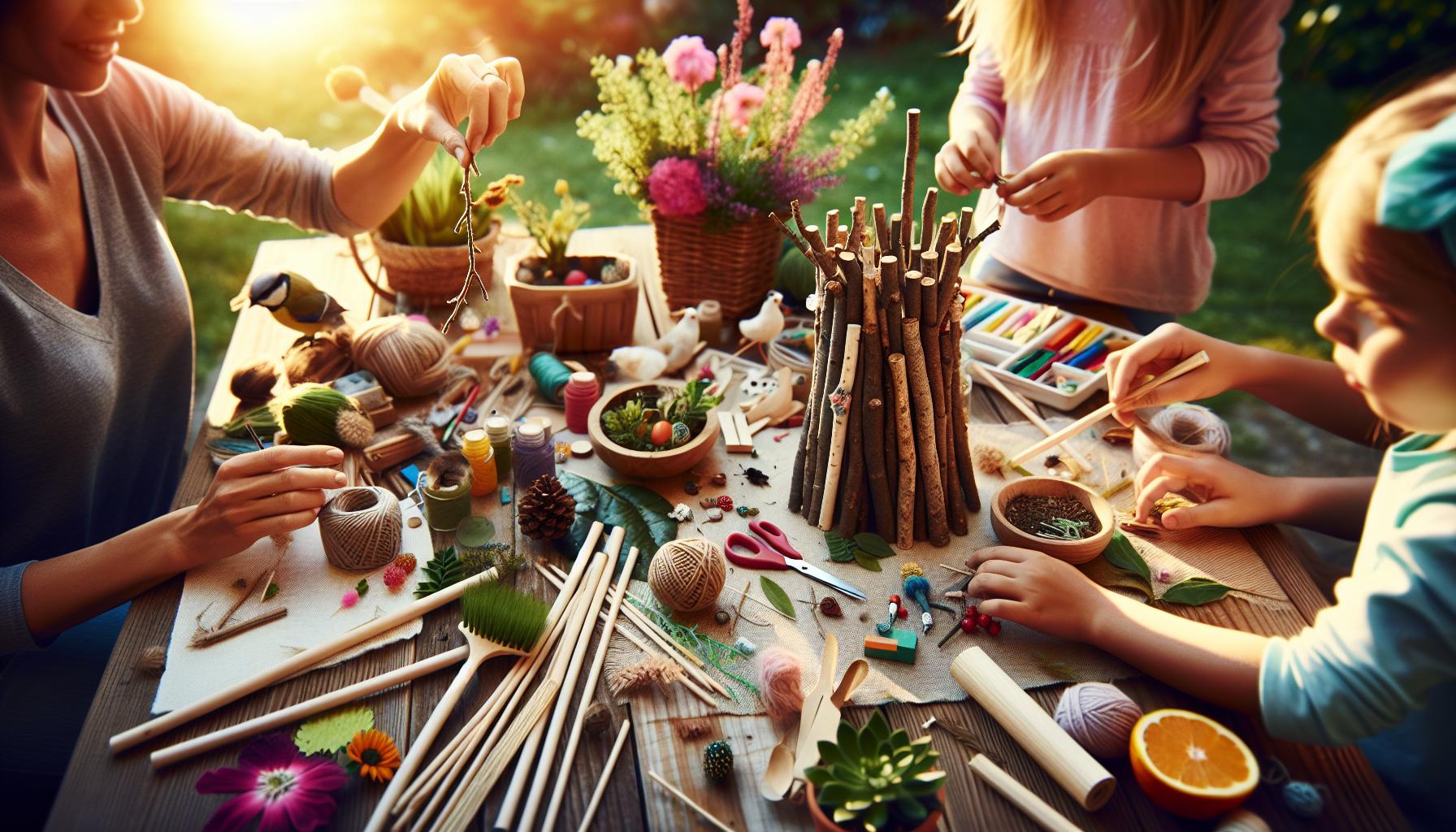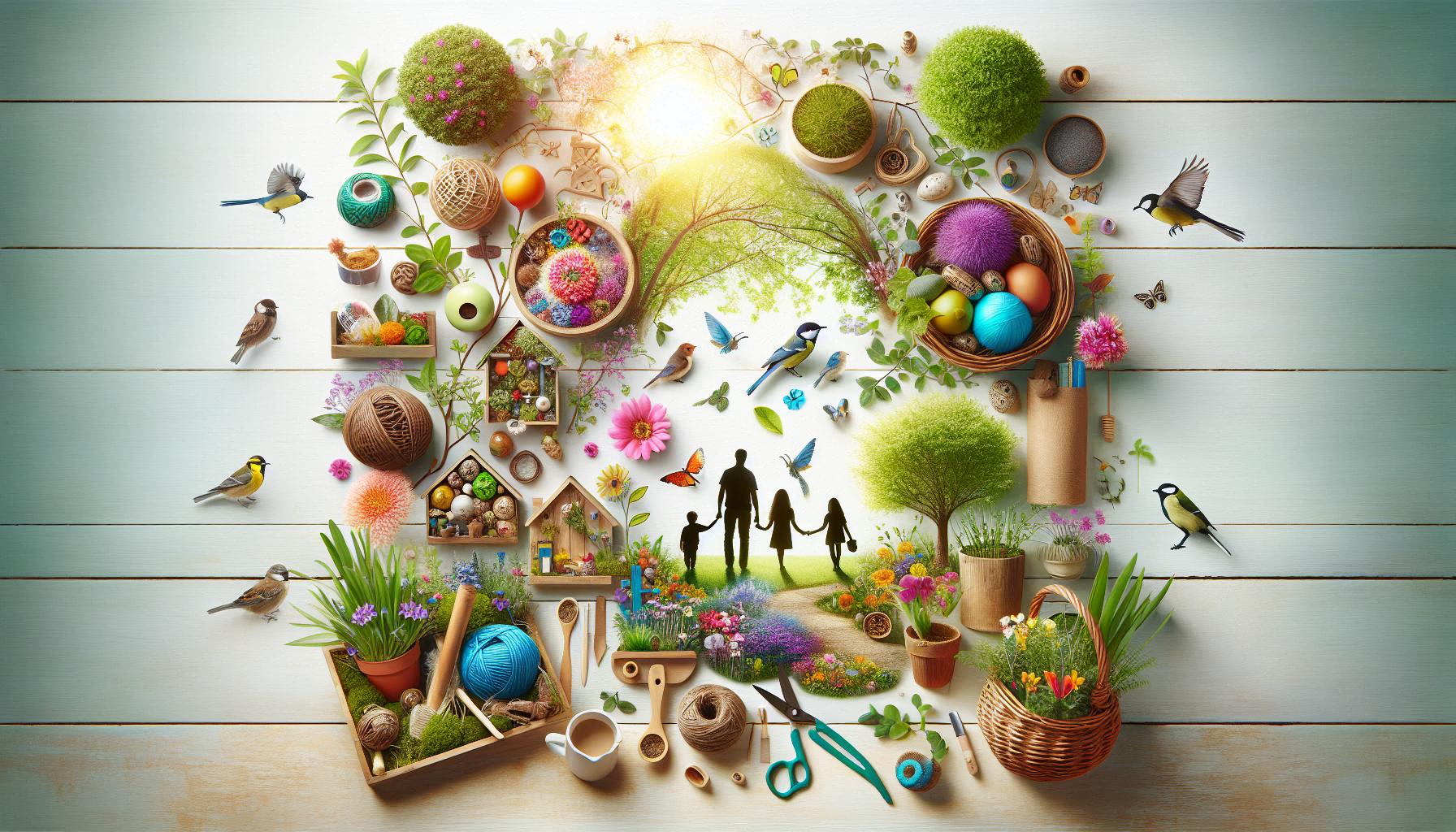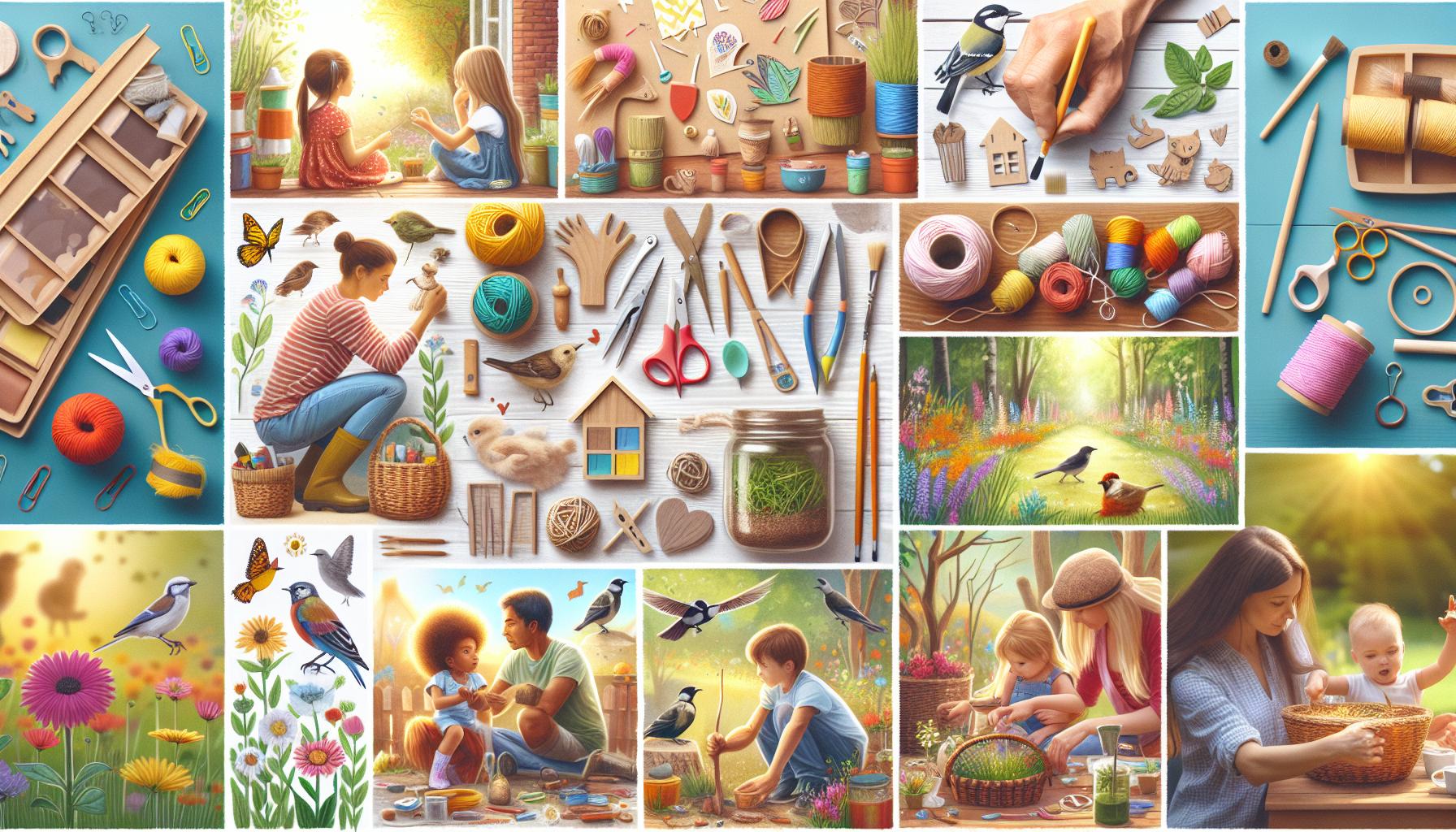How to Make a Fort Out of Sticks: Nature-Based Creativity
In a world dominated by screens, it’s time to unleash your inner architect and reconnect with Mother Nature—one stick at a time! “How to Make a Fort out of Sticks: Nature-Based Creativity” isn’t just a DIY guide; its your ticket to a whimsical world where the wildest dreams of childhood come to life. Imagine constructing a majestic fortress that rivals the castles of historical kings, all while twigs transport you back to simpler times. It’s therapeutic, creatively satisfying, and trust us, way more fun than binge-watching another season of that show you swore you’d finish. So grab your walking stick, channel your best lumberjack, and let’s get crafting! your backyard awaits, and those sticks are not going to stack themselves!
Choosing the Right Location for Your Stick Fort
Picking the perfect spot for your stick fort can enhance not only your building experience but also the overall playability of your fort. Look for an area with abundant stick resources, preferably near a variety of trees or bushes. A location shaded by trees can protect your structure from rain and provide a cooler atmosphere on sunny days. Consider the following factors when selecting your site:
- proximity to Resources: Ensure easy access to sticks and branches, as well as natural materials for camouflage or decoration.
- Ground Conditions: Choose a flat area free of large rocks and debris to allow for a stable foundation.
- Safety: Stay clear of any areas prone to flooding or those with heavy foot traffic to keep your fort secure and enjoyable.
Another important aspect of location scouting is the surrounding habitat. Your fort should ideally blend seamlessly into nature, fostering a sense of adventure and inventiveness. Look for spots that offer natural barriers such as bushes or hollows, which can make your fort feel like an enchanted hideaway. here’s a helpful table to visualize potential features of your location:
| Location Feature | Description |
|---|---|
| Tree Cover | Provides shade and shelter from whether elements. |
| Water Source | Nearby streams or ponds for a refreshing environment. |
| Open space | A clear area around your fort allows for easier navigation and play. |
| Wildlife Activity | observe and interact with nature, enriching the fort experience. |
Essential Tools and Materials for Building a Stick Fort
Building a stick fort is an engaging way to reconnect with nature while sparking creativity. Before you embark on your fort-building adventure, gathering the right tools and materials is crucial. here’s a list of essential items that will enhance your construction process:
- Sturdy Sticks: Look for straight branches and logs for the framework; larger pieces provide structure, while thinner ones can fill in gaps.
- Twine or Rope: For securing joints, using natural fiber twine or strong rope can ensure your fort remains stable.
- Tarps or Blankets: Perfect for creating a roof or walls, these materials add protection and a personal touch.
- Tools: While many will rely on hands alone, having a small hand saw or pruning shears can help cut larger sticks if necessary.
- Decorative Natural Elements: Incorporate leaves, flowers, or pine cones to personalize your fort and make it feel welcoming.
Additionally, consider organizing your workspace for maximum efficiency while building. A simple table could be set up to hold your tools, so everything is within reach. Here’s a quick overview of helpful organizational tips:
| Tip | Description |
|---|---|
| Designate a Gathering Area | Choose a spot nearby to collect sticks and materials without cluttering the workspace. |
| Arrange Tools Logically | Keep frequently used tools at the front and less-used items towards the back. |
| Break Down Tasks | Plan different stages of construction (e.g., framework, walls, roof) to streamline the process. |
Techniques for Building Sturdy Structures with Sticks
When constructing a structure with sticks, understanding the principles of balance and weight distribution is vital for creating durability. One effective technique is the triangular bracing method, which enhances stability by evenly distributing forces. This can be accomplished by creating triangular frames using sticks positioned at angles to form a robust base. Additionally, interlocking the sticks can create friction, holding them securely in place. Consider using crisscross patterns for reinforcement, which helps prevent any collapse under pressure. To elevate the structural integrity, implement cross-bracing at key junctions where stress is likely to accumulate.
Another essential aspect is the choice of materials.Opting for thicker, sturdier branches at the base while integrating lighter sticks for the upper portions can yield a stronger overall structure.Moreover, employing natural adhesive elements such as mud, tree sap, or twine enhances the cohesion between the sticks, contributing further to stability. A well-planned foundation is also crucial; ensure your structure sits on firm ground to mitigate shifts caused by environmental factors.To visualize the right proportions and design, consider creating a simple table layout of materials and usage:
| Material Type | Recommended Use | Notes |
|---|---|---|
| Thick branches | Base structure | Provides stability and support |
| Medium sticks | Walls | Good balance of weight and resilience |
| Thin twigs | Roof reinforcement | Helps to minimize weight on the structure |
Incorporating Nature: Enhancing Your Fort with Natural Elements
Using natural materials not only enhances the aesthetics of your fort but also connects children with the beauty and functionality of the outdoors.Begin by scouting your surroundings to find materials that can serve as the building blocks of your creation. Consider incorporating elements such as:
- Sticks: Varied sizes can be used for the framework and support of your fort.
- Leaves: Great for thatched roofs or flooring, adding softness and camouflage.
- Rocks: Useful for anchoring walls or adding stability to stick structures.
- Flowers or Ferns: For decoration, giving your fort a vibrant, natural vibe.
Moreover, using natural elements creates an engaging learning opportunity. Children can experiment with structural integrity, discovering how different shapes and sizes can influence the stability of their fort. Take time to discuss the purpose of each item collected, fostering an appreciation for nature. Such as, you might explain how:
| Material | function |
|---|---|
| Thicker Sticks | Support beams for the roof |
| Leaves | Insulation and camouflage |
| Rocks | Foundation weight for stability |
By incorporating these elements thoughtfully, you not only enhance the aesthetic and functional aspects of your fort but also encourage imaginative play that intertwines creativity with natural exploration.
Creative Design Ideas for Personalizing your Stick Fort
Transform your stick fort into a unique haven that reflects your personality and style. Start by incorporating colorful elements such as painted stones or natural dyes on the sticks to give your fort a vibrant touch. Use twine or natural fibers to hang bunting or garlands made from leaves, flowers, or even handmade paper. Consider adding a personal flair with custom signs indicating the name of your fort or fun quotes that inspire joy, using locally found materials. This not only adds character but also engages creativity and gives your space a welcoming atmosphere.
Another way to personalize your creation is by designing themed sections within your fort. As a notable example, create a cozy reading nook by outfitting it with soft cushions and blankets made from materials like moss or soft leaves. You might also set up a little art corner, complete with a small easel for painting or drawing on nature-themed projects. To enhance interaction and fun, create a mini scavenger hunt with items hidden around the fort and a checklist for friends to find. Each of these elements invites creativity and offers endless opportunities for personalization, making your stick fort a delightful reflection of your imagination.
Safety Considerations When Building and Playing in Your Fort
When constructing your fort from sticks, it is indeed essential to prioritize safety to ensure an enjoyable experience for everyone involved.Begin by selecting a suitable location that is away from potential hazards such as roads, water bodies, or heavy traffic areas. Make sure the ground is flat and free from sharp objects or thorny plants that could cause injuries. In addition, use sturdy, dry sticks that won’t easily break under weight, and avoid branches that are rotting or unstable. Encourage the use of a soft surface, like grass or moss, to cushion any falls that could occur while playing near or inside the fort.
While being creative and imaginative is critically important during fort-building, it is indeed equally vital to establish ground rules that ensure safe play. consider implementing a buddy system where children play in pairs or groups to avoid injuries or getting lost. In addition, incorporate the following precautions:
- No Climbing: Avoid climbing on the fort or any constructed elements, as this may lead to falls.
- Structural integrity: Regularly check the fort to ensure it remains safe and stable, making repairs as necessary.
- Emergency Plan: Create a clear plan for emergencies, ensuring all participants know how to react in case of accidents.
Lastly, it’s beneficial to have an adult supervise the area during construction and playtime. This oversight can ensure that safety protocols are followed and provide immediate assistance if any mishaps occur. encourage children to communicate openly about their experiences and discomforts while using the fort, reinforcing the importance of safety over play. establishing these foundational safety measures will not only create a secure environment but also foster creativity and fun while exploring the wonders of nature.
Encouraging Imagination and Play through Outdoor Fort Building
Building a fort out of sticks is more than just a creative endeavor; it’s an enriching experience that stimulates imagination and promotes physical activity. as children gather materials from their natural surroundings, they engage in play that hones their problem-solving skills. The process of assembling sticks into a structure allows for experimentation and collaboration, especially when working in groups. The tactile nature of this activity encourages kids to connect with the environment,fostering an appreciation for outdoor spaces while developing fine and gross motor skills. When they envision their fort, children often find themselves immersed in storytelling, inventing scenarios and characters that bring their creation to life.
To enhance the fort-building experience, consider encouraging specific themes or challenges. here are some ideas to inspire creativity:
- Nature Detective: Incorporate different leaf types or rocks into the structure.
- Storybook Fort: Base the design on a favorite story or movie.
- Secret Hideout: Create hidden compartments or special sections in the fort.
- Team Challenge: Split into teams to build the highest or most innovative fort.
Utilizing simple, natural materials from the surroundings not only sparks creativity but also teaches resourcefulness. A collaborative approach encourages social interaction, as children learn to share ideas and materials, fostering teamwork and dialog skills. Furthermore, having a dedicated time to play in the fort allows for imaginative gone wild, turning that simple structure into a kingdom, a spaceship, or a secret base for undercover missions.
Preserving the Environment While Creating Outdoor Spaces
Creating outdoor spaces such as stick forts not only fosters creativity but also encourages environmental stewardship. When building a fort, consider utilizing materials that are naturally abundant and enduring. Rather of cutting down trees or disturbing native vegetation, source your materials from fallen branches, twigs, and other organic debris found on the ground. this approach helps maintain the ecosystem by ensuring that living plants remain undamaged while providing a playful habitat for local wildlife. Furthermore, integrating wildflowers or native plants around your creation can enhance biodiversity and stabilize the soil, creating a more resilient environment.
Incorporating natural elements into your fort-building process can also serve educational purposes. Engage children in discussions about local flora and fauna, water conservation, and the importance of preserving wildlife habitats. Activities could include:
- identifying local plant species: Encourage exploration and learning about native plants.
- Creating habitats for insects: Leave small spaces or shelters for beneficial insects and critters.
- Water conservation methods: Discuss ways to collect rainwater or position the fort to collect dew.
Additionally,you could establish a small system to monitor the impact of your fort on local wildlife by observing how animals interact with the space over time.It’s a wonderful opportunity to engage with nature while promoting an ethos of respect and care for the environment.
Faq
What materials do I need to build a fort out of sticks?
To build a fort out of sticks, you’ll want to gather a variety of natural materials that can provide both structure and cover. Start with sturdy sticks that are at least your arm’s length to ensure they can support the fort’s weight. Look for dead branches or fallen trees, as they are typically dry and easier to manipulate.It’s also useful to collect smaller twigs, which can be used for weaving into gaps between larger sticks.
Along with sticks, consider incorporating leaves and bark for additional camouflage and insulation. You can also use larger items like logs or stones as a base for your fort. Moss can add comfort to the floor, while ferns and other greenery can help blend the fort into its natural surroundings. If you’re in an area with abundant materials, using natural found objects like pinecones or acorns can also make your fort more unique and visually appealing.
How do I choose the right location for my fort?
Choosing the right location for your stick fort is critical to its success. Look for a spot that offers both protection and accessibility. Areas near large trees provide natural shade and windbreaks, which can keep your fort dry and pleasant in various weather conditions. Additionally, choose a location that’s at least partially enclosed to give your fort a sense of security.
Consider proximity to materials as well. A site that has a good supply of sticks, leaves, and structural components nearby will save you time and effort while building. Additionally, ensure that the site is safe and free from hazards like falling branches or nearby wildlife. A well-chosen location can enhance your fort-building experience and encourage longer playtimes, allowing for creativity and exploration in nature.
What techniques are useful for constructing a sturdy stick fort?
When it comes to building a sturdy stick fort, several techniques will yield the best results. A-frame construction is one of the most popular methods. This involves creating a triangular shape by leaning sticks against a central horizontal beam, which distributes weight evenly and adds stability. Start by securing longer sticks as the backbone and lean shorter sticks against this frame, creating a covered space inside.
Another effective technique is weaving smaller twigs between larger sticks. This method fills gaps, providing additional support and making the fort more robust against wind and other natural elements. You can also use a cross-bracing technique by placing sticks in a crisscross pattern to enhance structural integrity. Consistently checking that your fort remains level and adjusting as necessary will ensure it doesn’t collapse under its own weight. Remember, adaptability is key—allow yourself to adapt the design as you work!
how can I enhance my stick fort with decorations?
Enhancing your stick fort with decorations can transform it from a simple shelter into an imaginative hideaway. Start by collecting natural materials such as flowers, leaves, and stones. These can be used to adorn the entrance or the walls of your fort, creating an inviting atmosphere.You can even use different types of leaves to create patterns or color schemes that appeal to your aesthetic sense.
Consider crafting functional decor as well.Such as, you might create a small seating area inside the fort using moss or leaves. Hanging small items like pinecones or shells around the fort can also add a personal touch and engage other kids in imaginative play. Moreover,storytelling elements such as creating a “magic door” using sticks can spark creativity and invite others to join your adventures in the fort.
What safety precautions should I take when building a stick fort?
Safety is essential when building a stick fort, especially when you’re working outdoors. First, ensure that the location chosen is flat and free from hazards like large rocks or sharp objects. It’s equally critically important to avoid areas underneath trees with dead branches (known as widowmakers) that could fall and cause injury. Always share your plans with adults if you’re building in a public space or wooded area.
As you work, be mindful of using tools like saws or knives if needed. If you’re using these tools to cut sticks, always follow safety guidelines, such as cutting away from your body and being cautious of your surroundings. Furthermore, avoiding toxic plants such as poison ivy while foraging for sticks will help you enjoy the experience without unwanted rashes. Always keep a first-aid kit nearby, especially if you’re building with children, to be well-prepared for minor injuries.
Can you share some creative play ideas to use with my stick fort?
Once your stick fort is built,the possibilities for creative play are endless! One idea is to host a nature scavenger hunt where participants need to find specific items (like different types of leaves or insects) that can be incorporated into or around the fort. This promotes exploration and appreciation of the environment while encouraging teamwork and problem-solving.
Another engaging activity is to create a storytelling session where participants can take turns narrating adventures that happen in or around the fort. You could even organize a role-playing game, where each person assumes a character such as a forest ranger, woodland creature, or adventurer. For a more structured game, consider setting up a mini obstacle course that leads into the fort, allowing for active play that stimulates both physical activity and creative thinking. With a bit of imagination, your stick fort can become a vibrant centre for countless fun activities!
Concluding Remarks
building a fort out of sticks is not just a delightful outdoor activity; it’s a powerful way to engage with nature and stimulate creativity. By connecting with the environment, you’re not only creating a cozy retreat but also nurturing your problem-solving skills and enhancing your ability to work with natural materials.
as discussed,choosing the right site,understanding the basic principles of structure,and incorporating elements like camouflage and aesthetics can turn your fort into a unique masterpiece.Whether it’s a whimsical hideaway for children or a contemplative space for adults, the potential for imagination is vast.
Remember, the joy in this activity lies not only in the final product but in the process itself. So grab some sticks, enlist a friend or family member, and let your creativity flow among the trees.With each build, you’ll uncover new techniques and develop a deeper appreciation for the resources nature provides. Happy fort-building!






